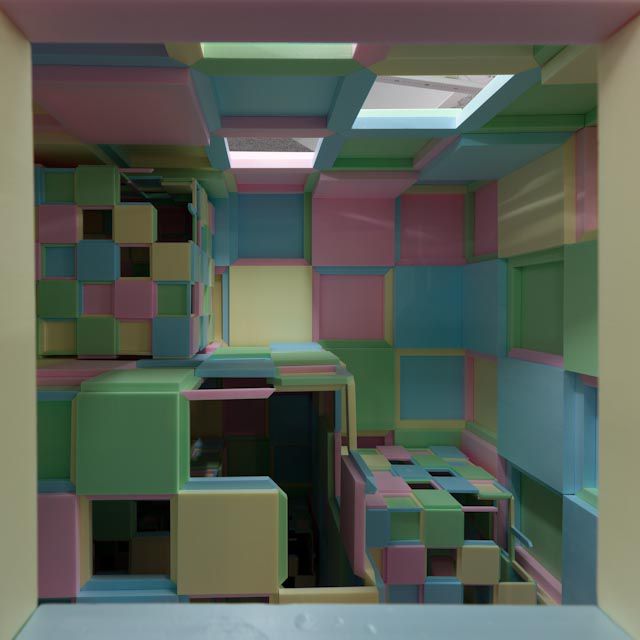 |
| Tommy Støckel, In My Mind This Goes On Forever, 2012, image: Tensta Konsthall |
This exhibition examines the abstract from multiple perspectives: formal, economic, and the contemporary artist’s “withdrawal strategies”––a manipulation of already existing spaces in order to create a “space apart” from the rest of society. Curated by Tensta Konsthall’s new director Maria Lind, the show inhabits revamped space (a triangulated design of energetic yellow and black) and cajoles visitors to reassess their rapport with abstraction as it applies to a changing world influenced by money, politics, and persuasion. Formal treatments of the concept are addressed via diverse media, as in Doug Ashford’s collage work Six Moments in 1967 # 1-6, 2011; José León Cerrillo and Sara Lundén’s The Wittgenstein Suite, 2012, a collaborative performance presenting pop songs honoring Wittgenstein; and Tommy Støckel’s styrofoam sculpture In My Mind This Goes On Forever, 2012.
Debates related to the justification of this exhibition’s “economic abstraction” component have surfaced due to conversations and works such as Goldin+Senneby’s Abstract Possible: An Investment Portrait, Goldin+Senneby with Thea Westreich Art Advisory Services, 2011. This piece features a confidential report withholding an estimate of all existing works in this very show, intended for the buyer’s eyes only, sold at Bukowski’s––an auction house founded by Lundin Petroleum that is at the center of serious human rights abuse allegations according to Kunstkritikk––at a fixed price of $18,000. This experimental gesture of selling works at fixed prices may be appreciated by those who find the art world off-limits, yet it invites one to consider how democracy (or lack thereof) relates to artistic production as clandestine commodity—or a universally accessible venue aspiring to transcend material forces. When is economic abstraction merely an escape hatch from admitting to a specific trajectory of funding? Logic often usurps metarhetorics; “Abstract Possible” tests the limits between ethics and art, inviting an audience to reassess how tactics might be altered to avoid being the elephant in the room.
To see the review in context, click here.








